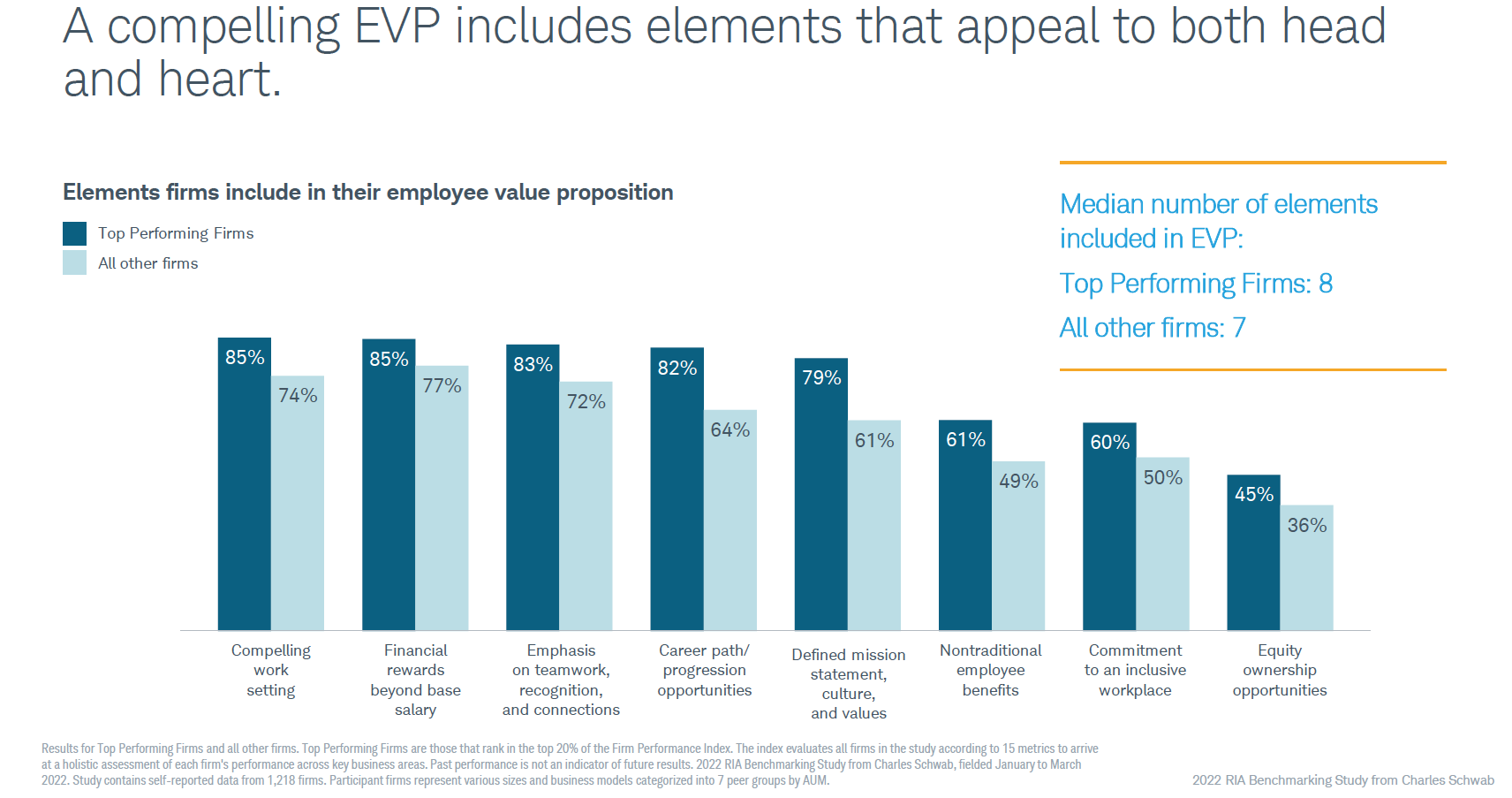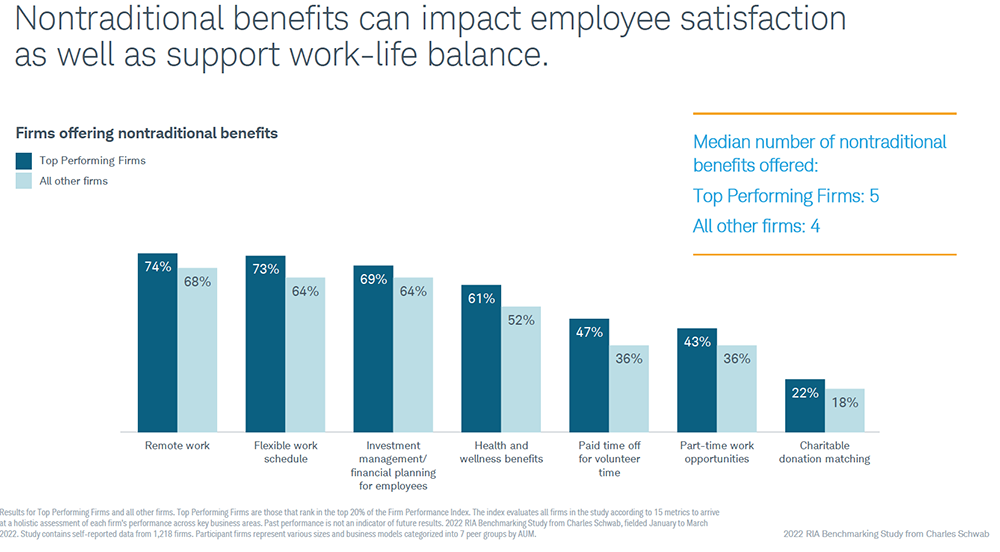Schwab Advisor Services has released an update to its 2022 RIA Benchmarking Study exploring how registered investment advisors are compensating staff in an effort to attract and retain the industry’s top talent in the highly competitive market.
Schwab estimates the industry will need to hire more than 70,000 new staff over the next five years based solely on growth rates and the number of existing firms, without accounting for attrition, retirement or newly established practices. Firms tend to add a new role for every $360,000 in revenue, the report found, adding more specialized and support staff as they grow.
With a large swath of the industry headed for retirement and more than 700 firms launching annually, according to McKinsey, the fierce competition for industry talent won’t be abating anytime soon.
The addendum, published Tuesday, was conducted in the third quarter of this year and highlighted compensation trends identified by nearly 1,000 respondents. It built upon an earlier study that found RIAs identified the need for more staff as their No. 1 strategic priority for the first time in 2022, surpassing client acquisition.
To attract and retain skilled professionals, top performing firms—those that rank in the top 20% across 15 metrics, including staff attrition—are developing clearly defined employee value propositions that include competitive compensation structures, both traditional and nontraditional benefits packages and career opportunities.
“It’s really important to have an employee value proposition that speaks to why someone should choose your firm and why they should stay at your firm, the same way that we always like to see firms have the client value proposition,” said Lisa Salvi, managing director for SAS Business Consulting and Education. “It's a different way of thinking about it, but it's incredibly important because talent is going to be the differentiator of the future.”

Unsurprisingly, compensation is the top concern for prospective hires. Base pay has risen 16% over the past five years and 6% year over year. It accounts for 69% of all compensation for revenue-producing roles and 87% for non-revenue-producing roles. Salvi expects that overall compensation will continue to rise, even in the face of down markets, but will be more tied to revenue generation or performance-based incentive programs.
Equity is a significant factor for many job seekers, she noted, and firms that offer a clear path to equity ownership have an upper hand capturing the industry’s top talent. Those that don’t are finding they must be “in the top tier of pay” to attract and retain comparable applicants. In 2022, approximately 30% of revenue-producing roles own equity, compared with 8% of other roles.
The second question potential employees tend to ask is around whether remote or hybrid work options are offered, something Salvi described as a nontraditional benefit. Traditional benefits are now considered table stakes for employers, who are getting more creative. Top performing firms offer an average of five nontraditional perks, while all firms offer an average of four.
Remote work, flexible schedules, wellness programs, financial services for employees, charitable donation matching and paid time off are all examples of nontraditional benefits RIAs offered their employees in 2022. Eighty percent of firms offer a 401(k) matching plan, two-thirds offer full paid parental leave for one or both parents, and nearly 20% offer unlimited PTO, tying compensation to productivity.

In addition to competitive compensation and the ability to work from home, prospective employers want to see a clear pathway for their careers to progress.
“One of the best things firms can do is to have a documented career path as part of that employee value proposition,” said Salvi, who spends a lot of time talking with next-generation professionals at universities and in training programs.
“That younger generation, they want to know if they decide to work for an advisory firm, that firm's going to invest in them and give them experiences to grow,” she said. “Investing in a documented career path, no matter what size firm you have, is critical for winning over that next generation of talent.”
Having “good, compelling answers” to these questions before embarking on a talent search is important, Salvi said, but highlighting other, less tangible aspects of one’s practice can also make it more attractive to serious job seekers. This can include things like the firm’s culture, values and mission; mentorship and professional development opportunities; community programs; or philanthropic initiatives.
“We like to see firms have a signature program—one thing that gives them something different in the marketplace,” she said, citing Schwab’s paid month-long sabbatical program as an example. “Whatever that thing is, brand it, shout it from the rooftop, put it on your website, put it in your job list listing, talk about it in the interview process. That will help you start to develop that reputation that will help you stand out among the competition.”
Firms that participate in the Schwab survey, which tracks major trends, priorities and challenges experienced by RIAs as the sector continues to evolve, can compare themselves against their peers in an online database, said Salvi.
Firms can search by ZIP code, role or years of experience and see what kinds of salaries, benefits, equity ownership programs and other incentives are being offered by their competitors.
“They can be really competitive,” said Salvi. “And those job seekers are getting more than one offer, so having some of those things that help your firm stand out is just really important.”





